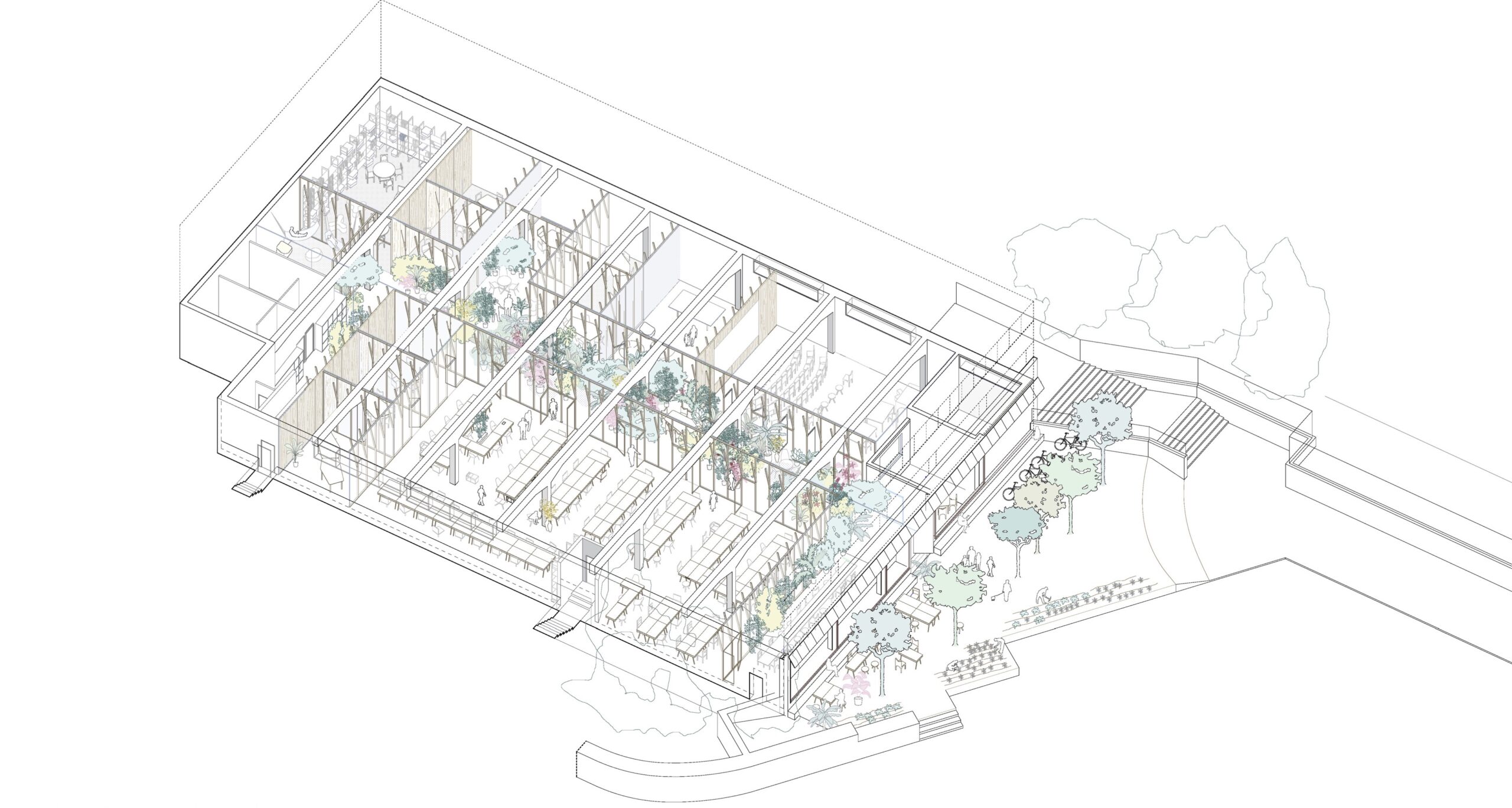Greenpeace Spain transfers its headquarters to an old warehouse with hardly any light or natural ventilation. The redesign project will have a decisive impact on the ability of Greenpeace to offer a workspace that responds to the philosophy, expectations and objectives of the organization. In some way, Greenpeace has to transfer to the street Valores 1 not only its headquarters and its workers, but its aspirations.
The lack of light in the space does not depend solely on its semi-buried position. The biggest problem is because their facades are very far from each other. The space is very regular, which gives it some flexibility, but too wide and deep. Likewise, despite being an old warehouse, it does not have overhead light, as is the case in most industrial warehouses, originally dedicated to this use. For all this, the space does not seem suitable to us to host, without changes, a contemporary workspace.
It is impossible to incorporate light and ventilation in a “natural” way, through facades or roofs, since the partial rental model of a property, as is the case, does not allow substantial changes in its shape, arrangement or structure. We therefore think that we must incorporate light, air, nature in a somewhat more artificial way, making the most of the signs and facilities provided by the preexistence.
We propose to introduce a “street” inside the space, following the direction of the main entrance. This street will not only distribute people, but also light, air, energy, vegetation and, in general, all the systems that build and condition the space. In some ways it is as if the Greenpeace workers are introducing, with their insistence and will, a glimpse of nature through the entrance.
We propose to reuse all the existing fluorescence luminaries, concentrating them nevertheless on the ceiling of this interior street, in such a way that they illuminate an interior garden. The air is pushed through a fabric duct located on the ceiling of this street, while the extraction is carried out through the northern and southern walls of the premises. The blown air is cleaned as it passes through the interior vegetation, before it is filtered into the work and meeting spaces. In summer, a more humid environment will be in this street, which, in a dry climate like Madrid, helps to lower the temperature by evaporation. In winter, heat accumulated due to the energy produced by outside insolation, interior lighting and heat sources such as computers and kitchens, will take time to dissipate thanks to the few facades and windows, as well as an intelligent use of thermal insulation.

